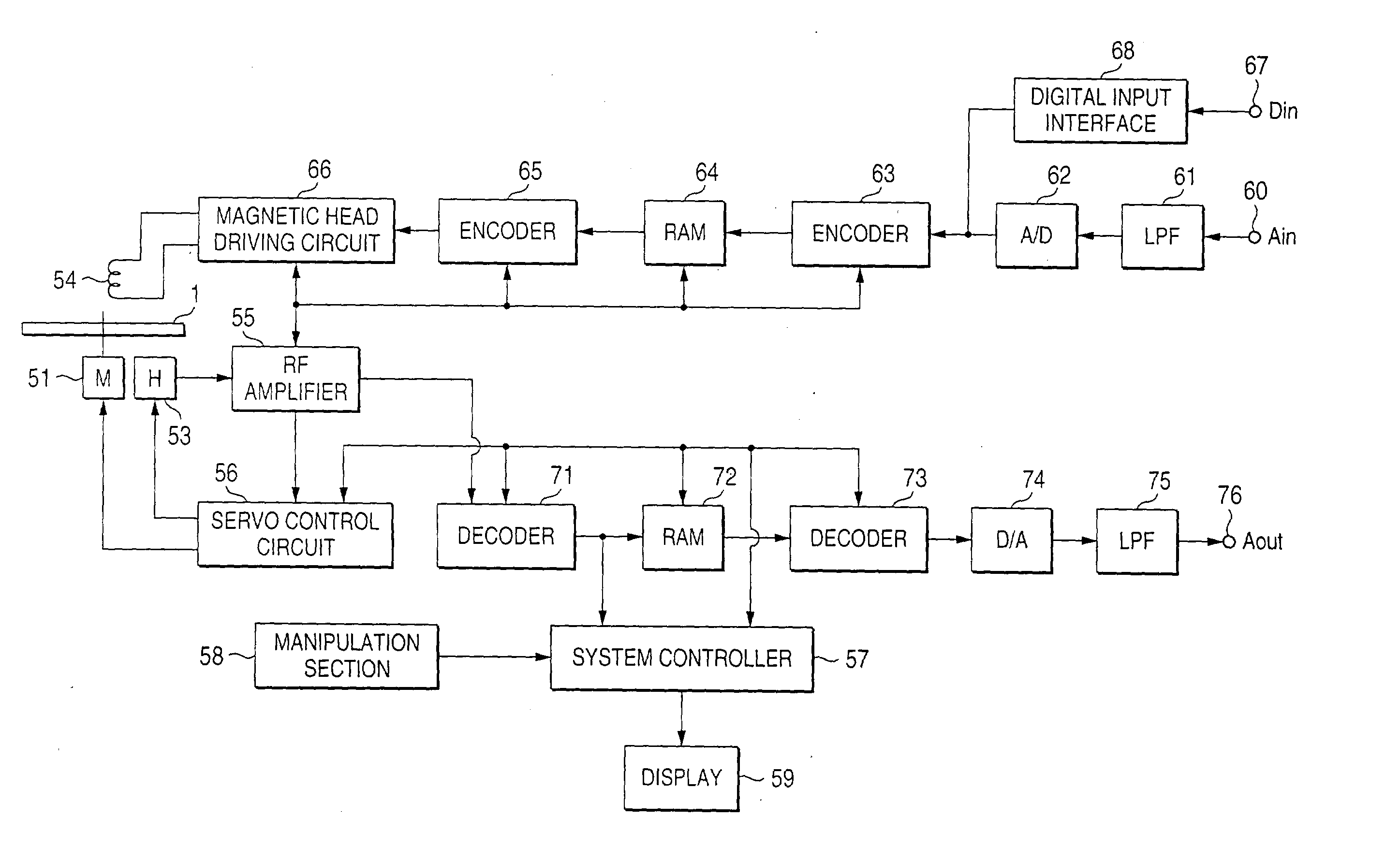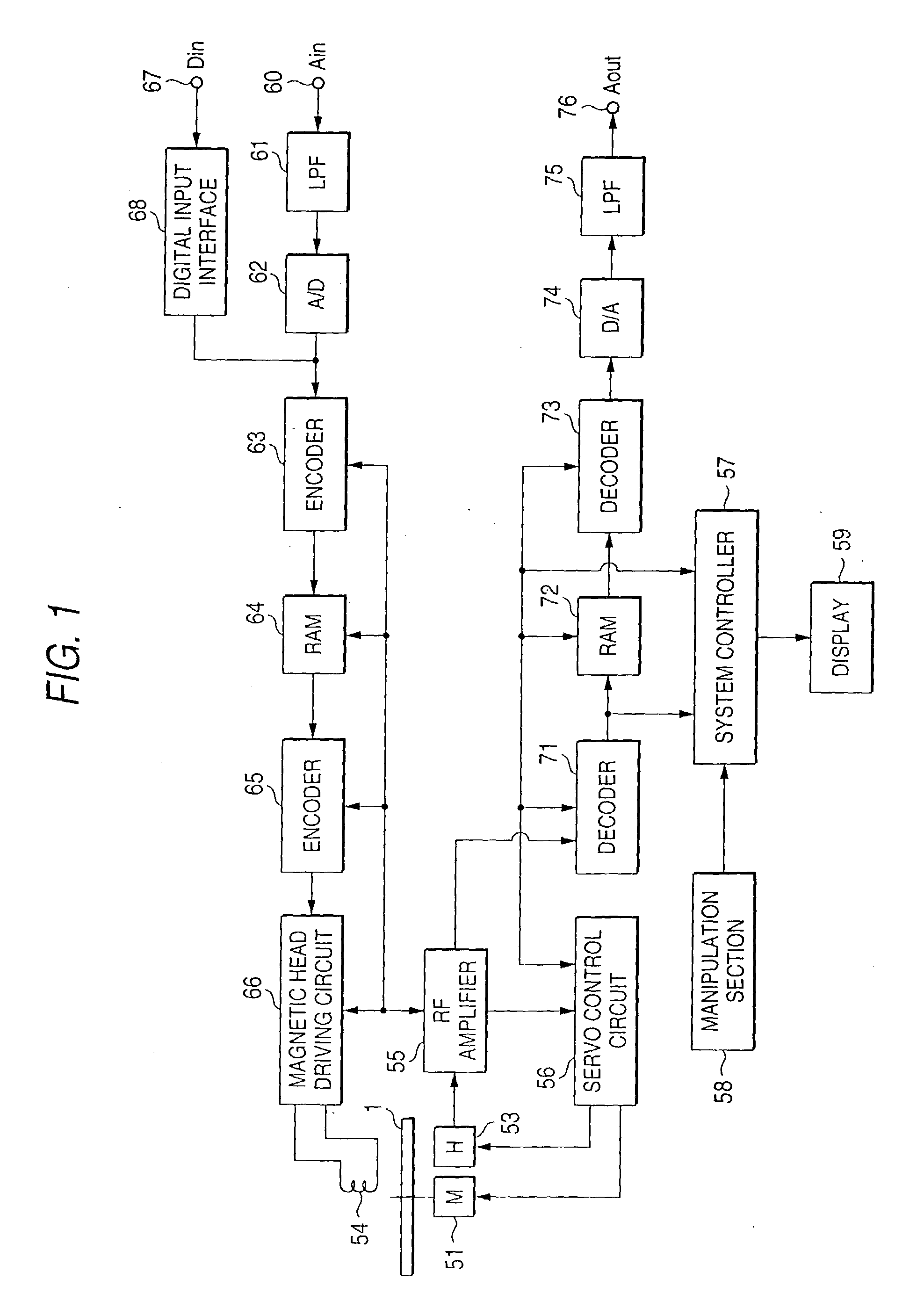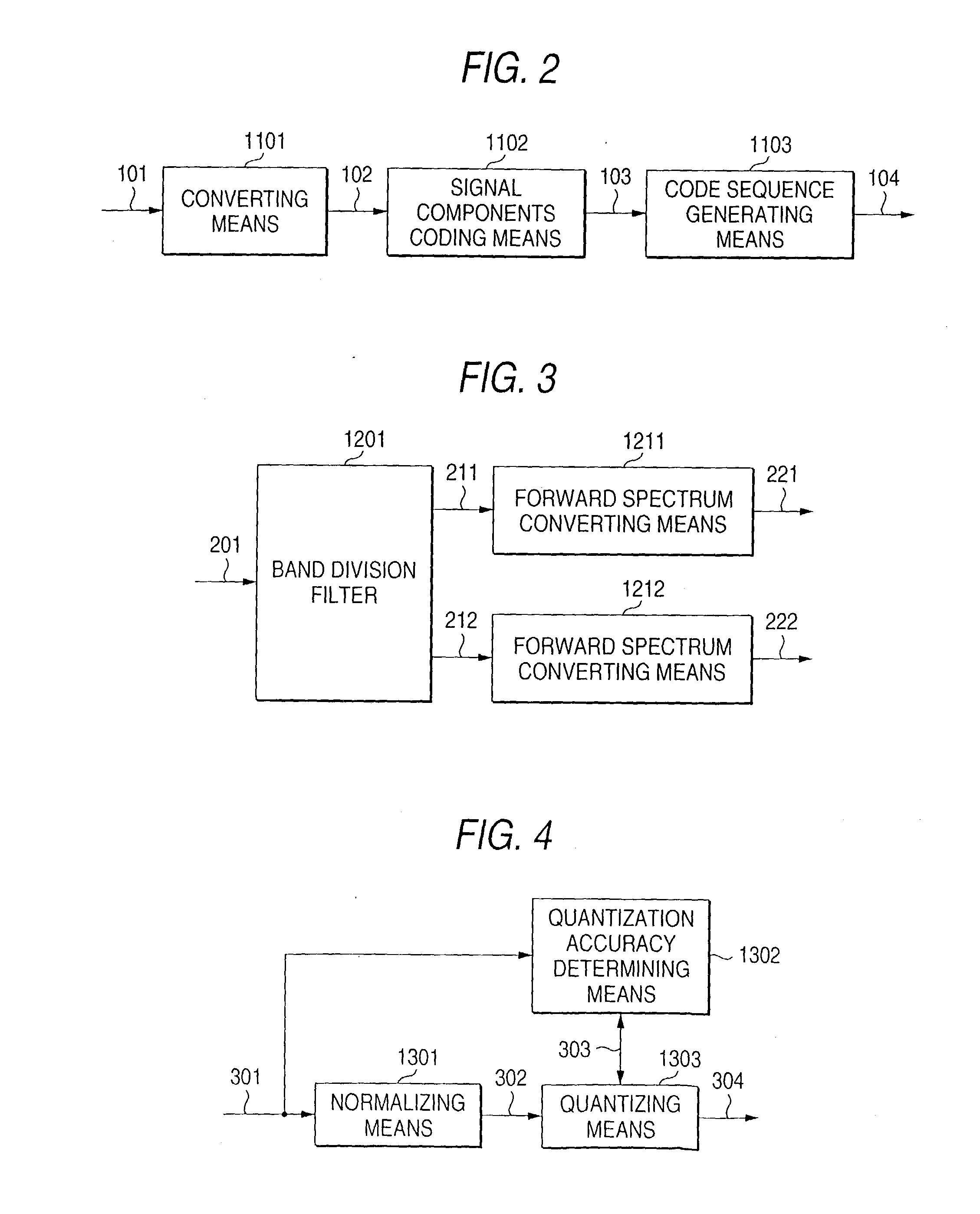Signal reproducing method and device, signal recording method and device, and code sequence generating method and device
a signal recording and signal reproducing technology, applied in the field of signal reproducing methods and devices, signal recording methods and devices, and code sequence generating methods and devices, can solve the problems of inability to introduce, in the future, a control that employs quantization accuracy, and the method is not the optimal one in terms of reducing the noise that can be heard actually by the human ear
- Summary
- Abstract
- Description
- Claims
- Application Information
AI Technical Summary
Benefits of technology
Problems solved by technology
Method used
Image
Examples
second example
[0237] One method for finding true middle-range information would be to try every possible candidate code sequence for a dummy data portion. And one method for judging whether candidate code sequences coincide with true middle-range information would be to check whether the former are longer than the latter. The number of candidates for a true code sequence can be reduced in this manner.
[0238] Usually, the empty region (hatched region) of each frame in FIG. 14 is filled with 0s or 1s in a fixed manner according to a standard. If one of all possible candidate code sequences reaches the portion that is considered the empty region, it is excluded from the candidates. The start position of the empty region cannot be determined exactly because the last portion of an actual code sequence may coincide, in value, with 0s or 1s that fill up the empty region. However, for example, if the empty region is filled with 0s and trial listening data have a last portion that is 10 consecutive 0s, a j...
first embodiment
[0248] It goes without saying that the methods of the first embodiment can also be applied to systems in which the entire code sequence is encrypted and it is reproduced while being decrypted.
[0249] Although the first embodiment is directed to the case of recording a coded bit stream on a recording medium, the invention can also be applied to the case of transmitting a bit stream. For example, this makes it possible to allow only listeners who have acquired true normalization coefficients of a broadcast audio signal over the entire band to perform high-sound-quality reproduction while allowing other listeners to perform reproduction of relatively low sound quality though they can sufficiently recognize its contents.
second embodiment
[0250] Second Embodiment
[0251] Next, a second embodiment of the invention will be described. Not only will unique features of the second embodiment be described below, but features common to the first embodiment will also be described below if necessary. This will allow a person skilled in the art to practice the aspect of the invention that relates to the second embodiment by reading the following description.
[0252] The second embodiment is directed to the case of receiving a digital signal such as an audio PCM signal and performing high-efficiency coding on it through subband coding (SBC), adaptive transform coding (ATC), and adaptive bit allocation. The adaptive transform coding is a coding method that is based on the discrete cosine transform (DCT) or the like and employs adaptive bit allocation. An input signal is coded by converting it into spectrum signals for each time block and then normalizing the spectrum signals together for each prescribed band, that is, dividing each s...
PUM
 Login to View More
Login to View More Abstract
Description
Claims
Application Information
 Login to View More
Login to View More - R&D
- Intellectual Property
- Life Sciences
- Materials
- Tech Scout
- Unparalleled Data Quality
- Higher Quality Content
- 60% Fewer Hallucinations
Browse by: Latest US Patents, China's latest patents, Technical Efficacy Thesaurus, Application Domain, Technology Topic, Popular Technical Reports.
© 2025 PatSnap. All rights reserved.Legal|Privacy policy|Modern Slavery Act Transparency Statement|Sitemap|About US| Contact US: help@patsnap.com



